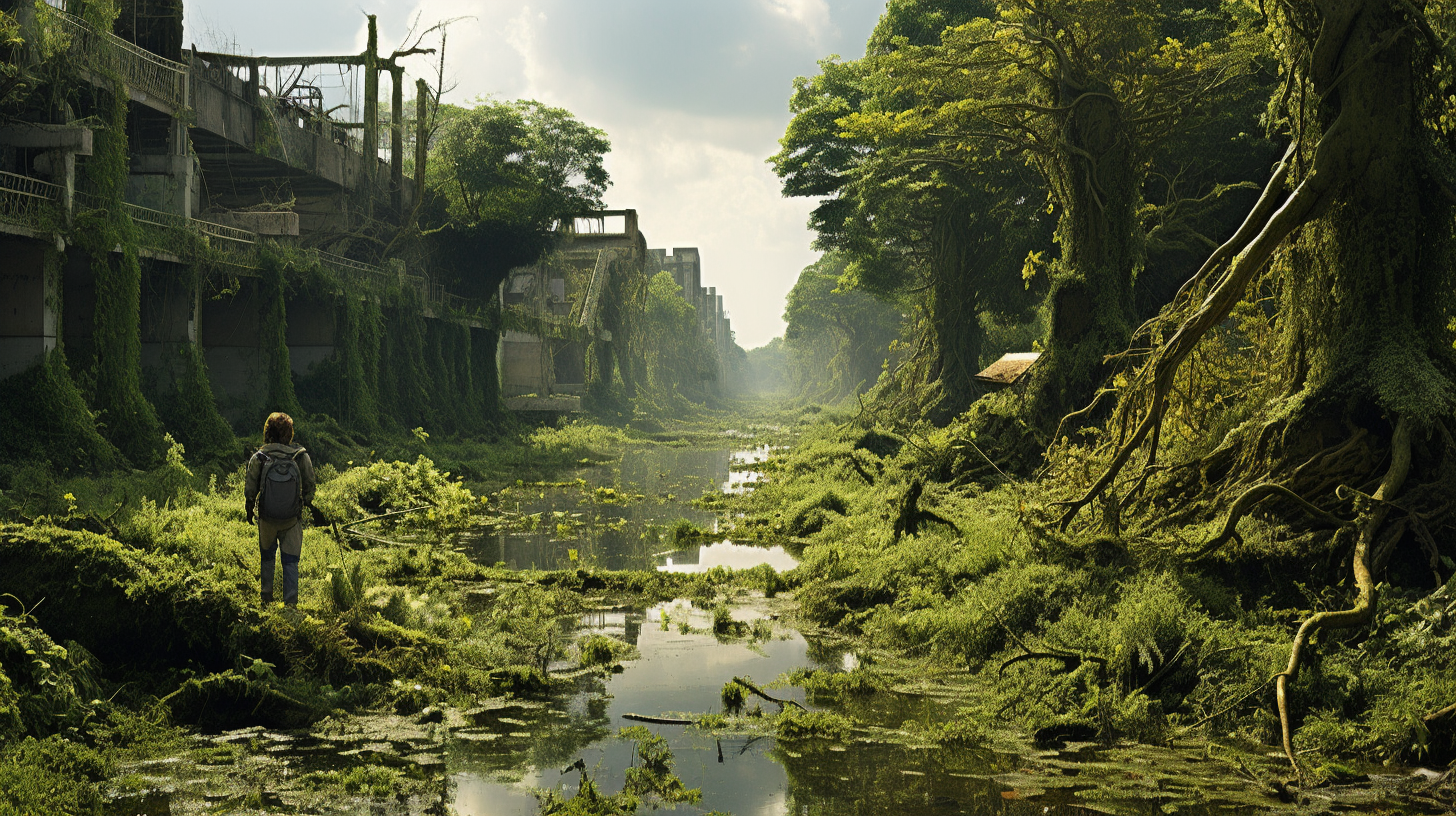In an ironical twist of fate, the verdant embrace of nature, so often celebrated for its life-giving abundance, has turned malevolent. In this article, we delve deep into the phenomena that have been aptly dubbed by leading environmental analysts as ‘The Green Plague’. It’s a tale of plant life gone wild, an unbridled botanical expansion that devours anything and everything in its path, reshaping our landscapes beyond recognition.
Once tranquil countrysides are now thick jungles, cities’ remnants peek through a blanket of creeping vines, and infrastructure lies ensnared by riotous flora. Our infrastructures are entombed by this unsolicited botanical uprising, a hostile takeover of leaves and stems, a world where greenery ceases to signify growth but rather encroachment.
Unseen Aggressors
At the heart of this unyielding growth is a confluence of factors that scientists have been scrutinizing. Abandoned agricultural lands, once meticulously managed, have spiraled out of control without the steady hand of human tending. Native species, long suppressed, roar back to life, exploiting vacated spaces.
These ecological shifts have been exacerbated by a reckless medley of human-induced climate patterns and the inadvertent introduction of invasive species. These aggressors display an almost voracious appetite for space, outcompeting native plants and wildlife, often pushing them into extinction.
But what triggers such excessive growth cycles? Experts point to mutations spurred on by the relentless exposure to pollutants and changes in atmospheric composition. Combine that with warming climates, and the conditions are ripe for certain plant species to thrive unnaturally, extending their reach far and wide.
Effects on Human Livelihood
Any image of idyllic, faerie-tale woods is quickly dispelled by the grim reality of these impenetrable thickets. They affect every facet of human life. Arable land is smothered, making food production a Sisyphean task. Travel and communication pathways, once clear, are threatened as roots undermine foundations, and branches entwine power lines.
The economic implications are harrowing. With the maintenance costs for subsisting amidst such chaos skyrocketing, government bodies and independent organizations scramble for solutions that appear to be more mythical than attainable.
Implications for the Future
This green apocalypse presents a complex paradox. It stands as a stark reminder of the tenacity of life—even in the form of overzealous plant growth—and yet it underscores the vulnerability of humanity’s engineered equilibrium. The question looms: Who is the true inheritor of the Earth?
As we grapple with this quandary, the boundaries between the natural world and human civilization blur. There’s a haunting beauty in these dystopian sceneries, with saplings sprouting from the skeletons of our achievements, a world reclaimed by nature’s indiscriminate might.
While the present may be dire, the green plague offers a lesson—a forewarning of the extremes of ecological imbalance. It serves as a morose muse for artists and writers who contemplate the quietus of human dominance. For the realists among us, it prompts pressing questions of adaptation and resilience. How does one live in symbiosis with a force majeure of foliage?
From here, we can only gaze into the depths of this verdant abyss and ponder. The solutions to curb this emerald tide are yet to be conceived, and mankind’s complacency in the face of looming green chaos must be addressed. For now, we can only watch as the green plague reclaims the land, a silent sentinel of what once was—and what could very well be—if left unchecked.
